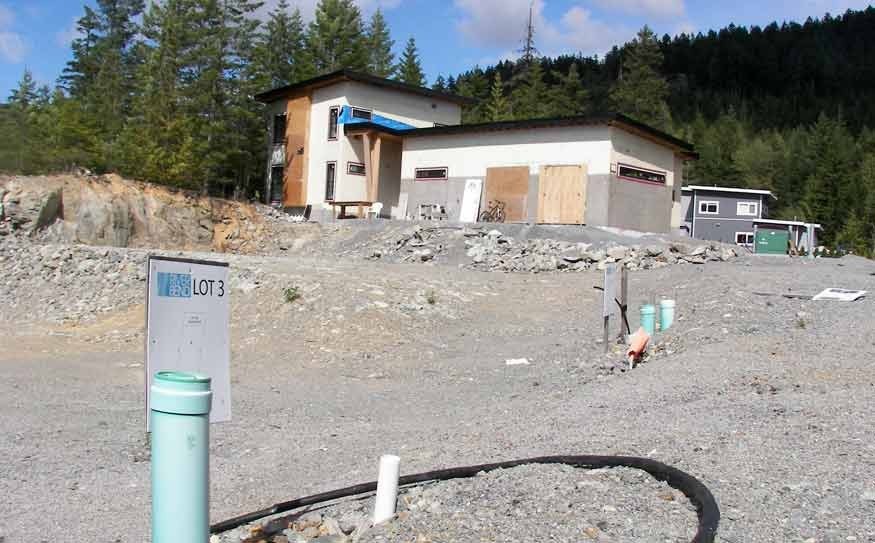The construction industry could be doing more to keep its workers safe.
"We are still killing a lot of people and I think all of us give it a lot of lip service, which is a shame," Anibal Valente, vice president of PCL Constructors Westcoast Inc. told a gathering of construction industry members at the first Construction Learning Forum held in Whistler by the Vancouver Regional Construction Association (VRCA) last weekend.
According to WorkSafe BC, 32 construction industry fatalities were registered in 2010; 13 potentially avoidable on-the-job incidents.
Dave Girard, a director with the Canadian Homebuilders Association's Sea to Sky chapter said most Whistler companies are well aware of the safety issues — but not all.
"It runs from A to Z," he said. "For some companies it isnt't even on their radar."
The industry leaders on the panel for the final discussion of the weekend forum included Sarah Clark, the president of Partnerships BC and Robert Lashin, the president of Houle Electric.
Lashin picked up Valente's thought about safety, saying a culture of safety needs to be created. He said the issue could be seen as a barrier or an opportunity.
"A lot of people equate safety with additional cost," said Lashin. "I equate safety for greater productivity so I'm a firm believer there shouldn't be any death or injuries on the job, and it doesn't mean your costs go up, you just have to be innovative in how you change the culture."
Houle said workers need to buy into a culture where safety is the first priority and once that happens productivity will increase.
The comments about safety came at the end of two days of discussions at the forum hosted by the VRCA, which represents more than 700 members in the multi-billion dollar non-residential construction industry in the Lower Mainland and Fraser Valley. A number of topics were tackled in various panel discussions. Other topics included skills shortages, environmental and sustainable practices, new technologies, new processes, global competition and the current fiscal environment.
Lashin predicted more prefabrication work is going to take place in the future as companies grapple with skills shortages and global competition.
"The world is changing and it is changing quick," said Lashin.
Tim Regan, a former president of the Sea to Sky division of the CBHA said he has experimented with prefabrication in Whistler, but found it wasn't any more effective for his company.
In general the construction industry is bracing for a skill shortage in B.C. in the thousands in the next few years, as workers retire and the industry shifts.
For now, said Regan,Whistler has the luxury of a highly trained and skilled labour pool. That's in contrast to the period leading up to the Olympic Games in 2010 where the skill set in Whistler was highly depleted. "The level of professionalism in the industry right now is as good as I've ever seen it," said Regan. "People are quoting accurate numbers and they are sticking by their quotes, so from an execution standpoint we're finding it very good, and we have been for the last two years."
Despite a struggling economy and news that even renovations are on the decline Regan is optimistic for the future of the industry because he feels the resort is coming out of a suppressed market that hasn't seen very much new construction recently. Basic supply and demand logic suggests the diminished supply will be addressed through new construction, he said.
He is also encouraged by Whistler Council's willingness to look at the non-conforming space issue.
The new council took a couple of months to deal with non-conforming space issues following what Regan described as a decade of struggle with local leaders. He said contractors are now able to advertise the actual numbers for home construction.
Regan described many recently built homes in Whistler as "grandkid catchers."
"We're looking at bringing extended families under one roof to enjoy either the summer or the winter experiences that Whistler can offer and we're now much more able to actually build the product they're actually looking for," said Regan. "I absolutely think this will spur construction activity."
A recent trend in Whistler, according to Regan, is fixed-price projects that give owners price and timing surety along with quality certainty. Cost-plus construction contracts are becoming less popular with consumers — consumers Regan described as smart and cost-conscious. He added that the construction of spec homes is a less attractive option for developers since the downturn in the worldwide economy.
According to BC Construction Employers about 125,000 people work directly in the construction industry, representing seven per cent of the province's workforce and earning nearly $3 billion a year.
The total value of construction in B.C. averages about $15 billion a year, or 15 per cent of the gross provincial product and it carries a multiplier effect of three indirect jobs.
Regan estimates that between 2,000 and 2,5000 people are employed in the construction industry and related businesses in the corridor




